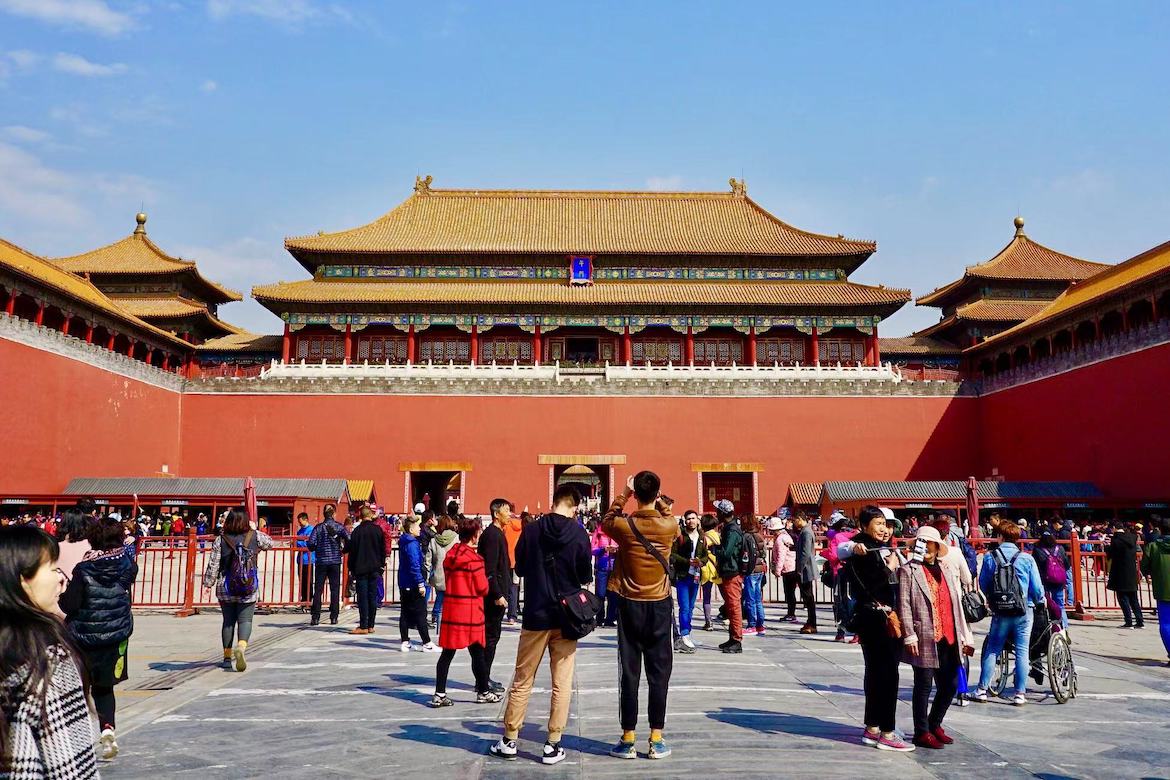If you’ve lived in Shanghai for more than five minutes, you’ve heard of the awesomeness that is xiaolongbao. Everyone recognizes the smell of that porky goodness, the droop of that soup-filled dumpling and the steam that wafts off the bamboo baskets piled high in every noodle shop in the city. However, what most people don’t know is that xiaolongbao actually don’t originate in Shanghai city; they come from a small suburb on the outskirts of Shanghai called Nanxiang.

Image by Sophie Steiner/That's
Background
Nanxiang’s origin story dates back to AD420-589, when the town was known as Chaxi, and the reign of Emperor Liangwu. During that time, a farmer was clearing land to build his farm and, upon removing a large rock, a pair of red-crowned cranes flew above it. Since cranes are considered holy in Buddhism, a monk living nearby proclaimed Chaxi a holy land for Buddha. Thus, the Baihe Nanxiang Temple was erected in AD505, and a town grew around it, receiving the same name as the temple: Nanxiang.
Image by Sophie Steiner/That's
How to Get There

Because of Shanghai’s far-reaching subway system, Nanxiang is extremely accessible, making it an easy day trip. Hop onto Line 11 towards Jiading and get off at the Nanxiang Station. From People’s Square, it’s less than a 45-minute subway ride! Take Exit 2, and walk Southwest along Minzhu Street for 10-15 minutes to reach the Nanxiang Old Street.
To Do
When you want to take a break from stuffing your face with xiaolongbao, Nanxiang also has some fantastic historical sites, temples and gardens. Similar to nearby watertowns, Nanxiang is composed of winding alleyways, canals and bridges, but it has its own personality that is clearly distinct.
Nanxiang Old Street
Image by Sophie Steiner/That's
Nanxiang Old Street is an ideal place for strolling, observing ancient architecture, snacking and people watching. Along the street, you will pass the nearly 1,000-year-old well and two of the oldest xiaolongbao restaurants, Rihuaxuan and Changxinglou, dating back over 100 years.
Twin Pagodas
Image by Sophie Steiner/That's
Nanxiang’s Twin Pagodas are among the most well-known pagodas in China, and were once located at the gate of the Baihe Nanxiang Temple. After being constructed around AD1000, they remain the only pagodas from the Five Dynasty Period that still exist to this today.
Guyi Garden
Image by Sophie Steiner/That's
The Guyi Garden (RMB12 entrance fee) was built during the Ming Dynasty (AD1368-1644), and is similar to most ancient-style Chinese gardens, like those found in Suzhou. Here you will find the main elements of Chinese gardens, such as flowing water, decorative stones, ornate architecture and water-side pagodas. Bamboo is one of the main features of the garden, with over 10 varieties planted here.
Tanyuan Garden
Image by Sophie Steiner/That's
The smaller, yet just as beautiful Tanyuan Gardens were once owned by Li Liufang, a well-known poet and artist, after they were built in the Ming Dynasty. The Tanyuan Gardens are also built in the Suzhou garden style, like the Guyi Garden.
Yunxiang Temple
Image by Sophie Steiner/That's
Sadly, the Baihe Nanxiang Temple burned down during the Qing Dynasty. The Yunxiang Temple was built near the original temple location in 2004. During the Spring Festival, swarms of people from nearby towns come to pray for a successful new year at the Yunxiang Temple.
To Eat
Come to Nanxiang ready to fill your tummy with every version of xiaolongbao imaginable. For those who have been living under a rock, xiaolongbao are soup dumplings, most commonly filled with pork or crab. The meat is nestled inside each dumpling skin with aspic, a savory jelly made with meat stock. The thin flour wrapper is twisted with exactly 18 folds and placed in a bamboo steamer. As the heat from the steamer seeps inside the dumplings, the aspic melts into a thick, fatty broth, creating a mouthful of warm, soupy deliciousness in each xiaolongbao bite.
Rihuaxuan Restaurant
Image by Sophie Steiner/That's
The inventor of xiaolongbao is believed to be Huang Mingxian, the original owner of Rihuaxuan restaurant, which opened its doors to the public in 1871. Huang wanted to compete with the other pork bun vendors that were selling buns more similar to today’s baozi, so he used a thinner skin wrapper and added pork jelly inside the dumpling to make the inside juicier and more flavorful.
Stop by Rihuaxuan to sample the most OG xiaolongbao you could ever get. Do note that both this restaurant and Changxinglou are used to catering to busloads of tourists, so the quality of their xiaolongbao has dropped in recent years. When compared to our favorite xiaolongbao shops in Shanghai, Rihuaxuan doesn't hold a candle; it's really just for nostalgia sake at this point.
Changxinglou Restaurant
Image by Sophie Steiner/That's
To rival Rihuaxuan’s success, Wu Xiangsheng opened Changxinglou nearby in 1900. His xiaolongbao attracted customers in droves, and he continued to expand his restaurant. The famous Nanxiang Steamed Bun Restaurant in the Yuyuan Garden area of Shanghai is a branch of Changxinglou’s original restaurant. But, if you can get it at the source in Nanxiang, why wouldn’t you?
Guyiyuan Street

Image by Sophie Steiner/That's
Hole-in-the-wall xiaolongbao shops line Guyiyuan Street, and we found them to be more authentic and better tasting than the ones at some of the more touristy spots. The prices are similar at all of them (RMB30 for 20 dumplings), so pick whichever one looks best, and do your own xiaolongbao food challenge to find your favorite. Xiaolongbao filling options range from pork to shrimp to crab, and vary by what's in season.
Nanxiang Old Street
Image by Sophie Steiner/That's
The Old Street is lined with street vendors hawking every kind of Chinese street food imaginable. From bings of all sizes to noodles, both dry and in soup, from buttery stuffed moon cakes to spicy chuar, from fried treats to pickled vegetables, the Old Street has it all.
Final Thoughts
Whether you’re looking for religious sights, gardens, old architecture or just dumplings, Nanxiang is the perfect day trip for anyone and everyone ready for a full on Chinese cultural experience. The journey there is shorter than many people’s daily work commute, making it an easy and fun activity for any weekend or call-in-sick-because-the-weather-is-too-perfect day.
For more Shanghai Day Trips, click here.
[Cover Image by Sophie Steiner/That's]






























0 User Comments